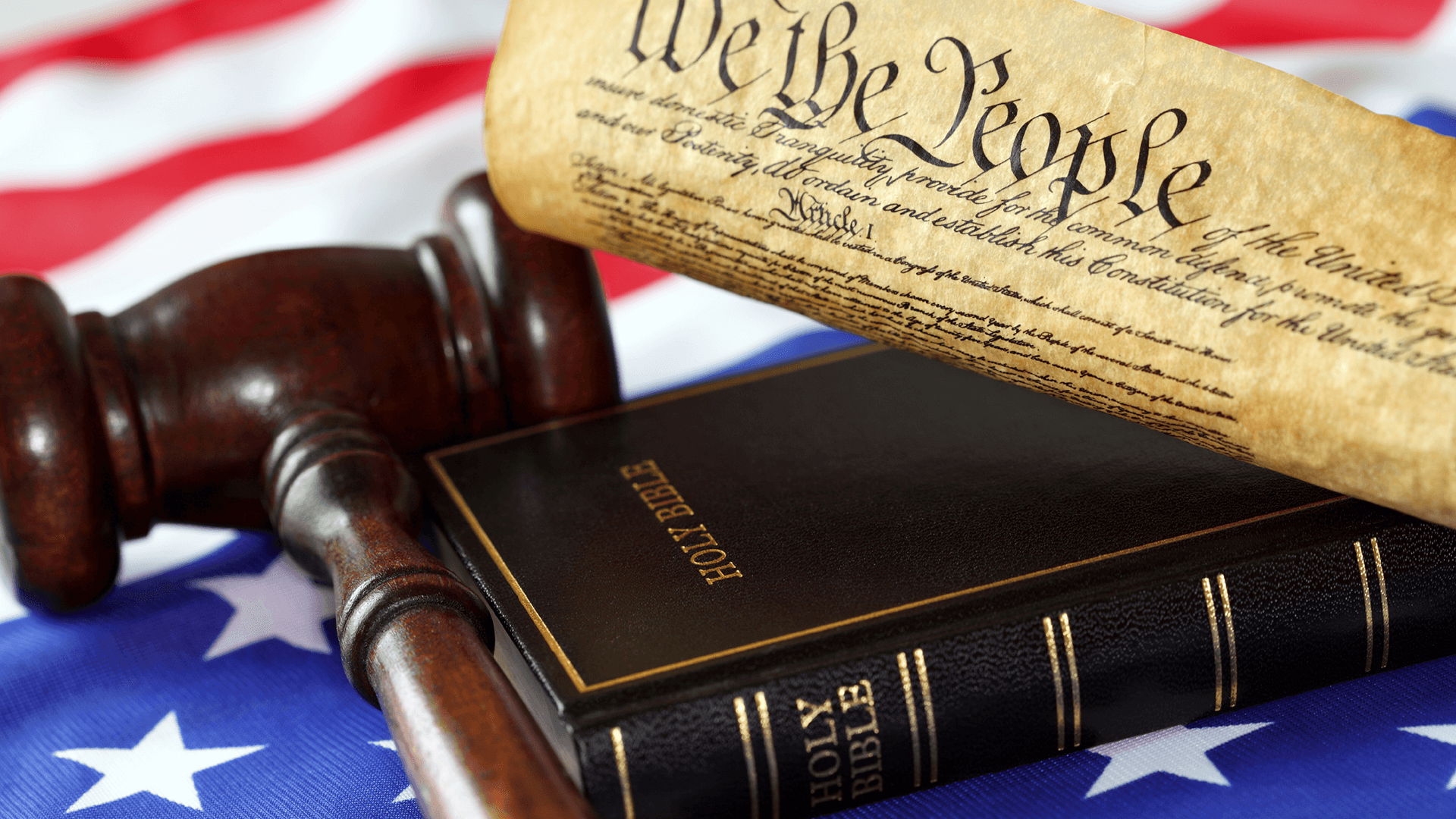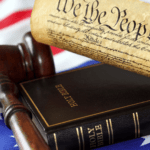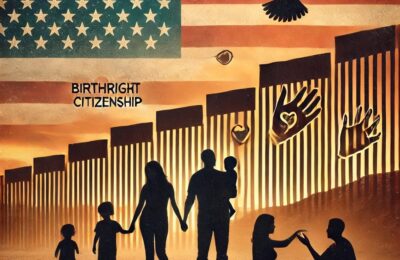This is Part 2 of the series Why Religious Liberty Matters
Religious Liberty on Trial: The Path to RFRA and Beyond
In the 1990s, America faced new challenges in balancing religious liberty with government interests. A landmark Supreme Court case, Employment Division v. Smith (1990), brought these tensions to the forefront, igniting national debate and ultimately leading to the passage of the Religious Freedom Restoration Act (RFRA). RFRA represented a commitment to protecting religious practices from unnecessary government interference, affirming that faith should not be compromised by bureaucratic hurdles.
The RFRA era also saw the emergence of the Religious Land Use and Institutionalized Persons Act (RLUIPA), which provided protections for religious assemblies and prisoners, highlighting the government’s duty to accommodate faith in diverse settings. These legislative efforts underscore the biblical call to honor freedom of conscience, as seen in 1 Peter 2:16: “Act as free people, and do not use your freedom as a covering for evil, but use it as bondservants of God” (Legacy Standard Bible, 2021). As we explore these modern challenges, we’ll see how America’s legal framework adapted to safeguard religious freedom while navigating the delicate balance between the Free Exercise and Establishment Clauses of the First Amendment.
Employment Division v. Smith (1990)
The case of Employment Division v. Smith marked a turning point in the interpretation of the Free Exercise Clause. Alfred Smith and Galen Black, members of the Native American Church, were fired from their jobs for ingesting peyote, a sacrament in their religious practice, and subsequently denied unemployment benefits. They argued that this denial violated their First Amendment right to freely exercise their religion (U.S. Supreme Court, 1990).
The Supreme Court, however, ruled against Smith and Black, holding that the government could deny benefits as long as it applied its laws neutrally and generally, without targeting specific religious practices. Writing for the majority, Justice Scalia argued that allowing exemptions for religious practices would create a “constitutional anomaly,” giving each person a right to choose which laws to follow based on personal belief. This ruling significantly narrowed the Free Exercise Clause, declaring that laws affecting religious practice do not violate the Constitution as long as they are not specifically aimed at religion.
The Smith decision sent shockwaves through religious communities, who feared that the ruling eroded religious protections. This case highlighted the biblical tension between obeying authority and holding firm to God’s commands, as illustrated in Acts 5:29, where Peter declares, “We must obey God rather than men” (Legacy Standard Bible, 2021). For many, Smith represented a troubling precedent that undermined believers’ ability to live according to their convictions.
The Rise of RFRA
In response to Smith, Congress passed the Religious Freedom Restoration Act (RFRA) in 1993, with bipartisan support. RFRA reinstated the “strict scrutiny” standard, meaning that any government action that substantially burdened religious exercise must serve a compelling government interest and be the least restrictive means of achieving that interest (U.S. Congress, 1993). RFRA was intended to protect individuals and groups from government interference in their faith practices, reaffirming that religious liberty is a foundational principle.
RFRA’s enactment was a pivotal moment for religious liberty, embodying the belief that faith should be protected, even when it challenges prevailing laws. The Apostle Paul’s words in Romans 14:5—“Each person must be fully convinced in his own mind”—capture this spirit, affirming that believers should be free to follow their conscience in worship and practice (Legacy Standard Bible, 2021). RFRA restored confidence that the government would prioritize conscience and respect the personal convictions that underpin religious practices.
Since its passage, RFRA has been applied in numerous cases, such as Burwell v. Hobby Lobby (2014), where the Court ruled that closely held corporations could refuse on religious grounds to cover contraceptives in employee health plans. These applications underscore RFRA’s impact in shielding individuals and organizations from policies that compromise their beliefs. By restoring strict scrutiny, RFRA reinforced that religious liberty should not be sacrificed at the altar of government convenience.
Religious Land Use and Institutionalized Persons Act (RLUIPA)
Building on RFRA’s principles, Congress enacted the Religious Land Use and Institutionalized Persons Act (RLUIPA) in 2000. RLUIPA targeted specific areas where religious freedom was especially vulnerable: land use and the rights of institutionalized persons. Religious organizations had long struggled with zoning laws that made it difficult to build or expand places of worship, while prisoners faced restrictions on religious practices within the confines of prison (U.S. Congress, 2000).
RLUIPA prohibits governments from imposing a substantial burden on religious exercise in land-use regulations unless there is a compelling interest and the least restrictive means are used. It also guarantees that incarcerated individuals can practice their faith freely, as long as it does not compromise prison security. This act affirms the biblical principle in Matthew 25:36, where Jesus says, “I was in prison, and you came to Me,” underscoring the importance of respecting the dignity and spiritual needs of all individuals, including those in confinement (Legacy Standard Bible, 2021).
RLUIPA’s impact has been profound, allowing religious communities to flourish in areas previously restricted by local laws and granting prisoners access to religious materials and practices. The act reflects a commitment to honoring religious expression even in environments where freedom is constrained, ensuring that faith is accessible regardless of one’s circumstances.
Free Exercise vs. Establishment Clause Tensions
Modern cases often bring the Free Exercise and Establishment Clauses into tension, as courts attempt to balance these dual mandates of the First Amendment. While the Free Exercise Clause protects individuals’ rights to practice their faith freely, the Establishment Clause restricts government from endorsing or supporting religion. These clauses, though complementary, sometimes conflict, especially in cases involving public institutions.
One notable example is Santa Fe Independent School District v. Doe (2000), where the Supreme Court ruled against student-led prayer at public school events, citing the Establishment Clause (U.S. Supreme Court, 2000). While supporters argued this was an exercise of free speech and free exercise, the Court held that even student-led prayer in a school context constituted an endorsement of religion by a public institution. This ruling highlighted the difficulty of upholding neutrality without inhibiting individual expression of faith.
These cases illustrate a legal landscape in which the rights of believers to practice their faith freely must be balanced against the principle of government neutrality. In Matthew 22:21, Jesus provides a framework for this balance when He says, “Render to Caesar the things that are Caesar’s, and to God the things that are God’s” (Legacy Standard Bible, 2021). The government’s duty to remain impartial towards religious matters allows faith to flourish independently, reflecting a commitment to the sacredness of both belief and public trust.
Reflective Questions
Consider these questions as we reflect on the modern challenges of religious liberty:
- How does RFRA’s protection of religious practices reflect the biblical call to honor conscience and freedom in worship?
- What role should government play in respecting religious assemblies and practices, as seen in RLUIPA?
- In cases where the Free Exercise and Establishment Clauses appear to conflict, how do you think the balance between faith and government neutrality should be approached?
These questions encourage us to consider how religious freedom intersects with our call to follow God faithfully, even in complex legal environments.
Conclusion
The 1990s saw a pivotal shift in religious freedom protections with the passage of RFRA and RLUIPA, two acts that strengthened the legal safeguards for individuals and communities practicing their faith. These laws reflect a national commitment to uphold religious liberty as a fundamental right, a reflection of the biblical principle that true worship must be free from compulsion and rooted in conviction. As modern cases continue to test the balance between the Free Exercise and Establishment Clauses, America’s commitment to religious freedom remains steadfast, though often challenged.
In the next post, we’ll examine contemporary issues in religious liberty, looking at recent cases and exploring the future direction of these protections in an increasingly pluralistic society. Each legal development, past and present, reminds us that religious liberty is a sacred trust—one that requires vigilance, respect, and a commitment to honoring the beliefs of all.
Chris Reighley is a Colson Fellow and a leader grounded in faith, family, and mission. With a career spanning servant leadership, digital marketing, and servant leadership, he is driven by a passion for empowering others. He is pursuing an Executive Master’s at The Bush School of Government and Public Service at Texas A&M and a Master of Arts in Biblical Studies from Redemption Seminary. Through Shoe Leather Gospel, Chris is dedicated to combating biblical illiteracy and mentoring future leaders.

References
- Legacy Standard Bible. (2021). 2nd ed.
- U.S. Congress. (1993). Religious Freedom Restoration Act. Pub. L. No. 103-141, 107 Stat. 1488.
- U.S. Congress. (2000). Religious Land Use and Institutionalized Persons Act. Pub. L. No. 106-274, 114 Stat. 803.
- U.S. Supreme Court. (1990). Employment Division v. Smith, 494 U.S. 872.
- U.S. Supreme Court. (2000). Santa Fe Independent School District v. Doe, 530 U.S. 290.






